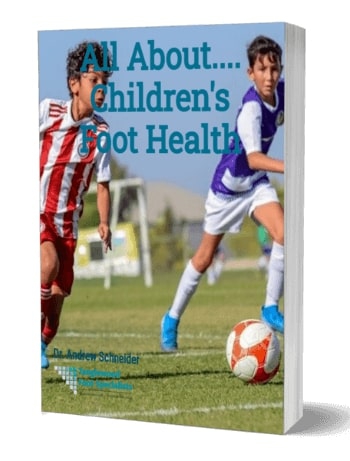During the long, hot, Houston summer, many student athletes take their youth sports training down a notch. But, with August (and back-to-school) approaching, they will soon be resuming intense athletic training. And, while that's great news for kids who love to be active and engage in team practices, it also poses a new threat: an increased risk of foot pain and injury.
You see, if your kids have been at home for a long time now, out of their typical training routines, they may have lost strength. And that means they could be vulnerable to injuries if they jump right into training at their pre-vacation levels of intensity.
And that’s not the only concern. Lots of kids have been walking around your house barefoot all summer. So, now, they may be experiencing the heel pain of plantar fasciitis. As such, before you send them back out to their team practices, or even to trainer-led workouts, here’s what you need to do to prevent youth sports injuries.
A Safe Return to Youth Sports
Hopefully, your youth coaches and trainers will know what to do in order to keep returning athletes safe. But just in case, here are 6 steps you should insist on as your child returns to athletic training:
- Individual assessments. Because every one of our children has different routines during summer vacation, their state of conditioning will be different from that of their teammates’. You need to make sure that coaches are individually assessing each player before setting schedules and routines for group workouts. And check in to see where your student athlete may have developed weakness, to make sure that any pre-set workouts aren’t putting his or her health at risk.
- Make a slow comeback. Consider engaging in a phased approach to renewed athletic training. Kids can’t just go from zero to two-a-days. That would be a recipe for an overuse injury at a minimum, or a season lost to injury at the more extreme end of the spectrum. Instead, coaches should offer a slow training buildup: one short practice the first week, with the length and frequency of sessions increasing gradually, week by week. Or, if you want to ger really scientific about it, increase activity levels by no more than 130% each week.
- Focus on fine details first. If kids want to earn back spots on the team, hard runs outside aren’t the place to starts (especially in the hot Houston weather.) Even student athletes used to running outdoors in every season may have lost stamina during a summer spent enjoying indoor activities (and air conditioning.) As such, they could collapse if outdoor training sessions last too long. Instead, focus on less draining skill building sessions during initial practices, working up to outdoor cardiovascular sessions as stamina and resilience increases.
- Build up strength. One great way to get back to your former fitness levels is to build muscle. While we wouldn't recommend weight training for younger students, body-weight exercises are always a great option. Focusing on kids' strength is crucial during this time of return because it builds up those muscles that support everything from soccer goals to home runs and slam dunks. And, in turn, this makes kids less likely to get hurt playing sports.
- Be proactive. The longer kids stay on the couch, the harder it will be to get them active again. So, even if youth sports teams aren't yet starting up, encourage kids to take a walk or bike ride every day. Or even just play outside. The point is to make activity a part of every day. So that when they start training at their former levels, it will be less of a shock to their bodies.
- Stay smart when it comes to shoe choices. Recently, this study revealed that pre-adolescent and adolescent males were more likely to sustain foot injuries if they ran in barefoot or minimal-style sneakers. So, if your child's sport involves lots of running, be sure to choose a sneaker style with plenty of support. (For more guidance on shoe selection to prevent youth sports injuries, check out our sneaker fit guide here.)
Treating Youth Sports Injuries in Houston
.jpg) Now that you’ve got a basic idea of how to protect your kids as they get back into sports, let us leave you with this thought: youth sports injuries will happen. They are basically inevitable, unless you’re willing to keep the kids inside for the rest of time. But, if your child does get hurt this summer, don’t panic—and don’t head to the ER, where you'll face long wait times and physicians who don't specialize in treating foot and ankle injuries.
Now that you’ve got a basic idea of how to protect your kids as they get back into sports, let us leave you with this thought: youth sports injuries will happen. They are basically inevitable, unless you’re willing to keep the kids inside for the rest of time. But, if your child does get hurt this summer, don’t panic—and don’t head to the ER, where you'll face long wait times and physicians who don't specialize in treating foot and ankle injuries.
Instead, if your child sustains a foot or ankle injury this summer, come into our Houston podiatry practice. We can conduct x-rays, immobilize or cast fractures, and diagnose your child’s injury more accurately than ER doctors, who do not have specialized training regarding youth sports injuries. Got any questions? Feel free to reach out by phone at 713-785-7881. We’re here for you, and ready to answer any questions. Need more support, or have a student athlete who's experiencing foot or ankle pain? Request an appointment in the office and come in for a comprehensive check-up. Together, we can help your child heal so that he or she is ready and raring to go for the fall athletic season, once school is back in session.














